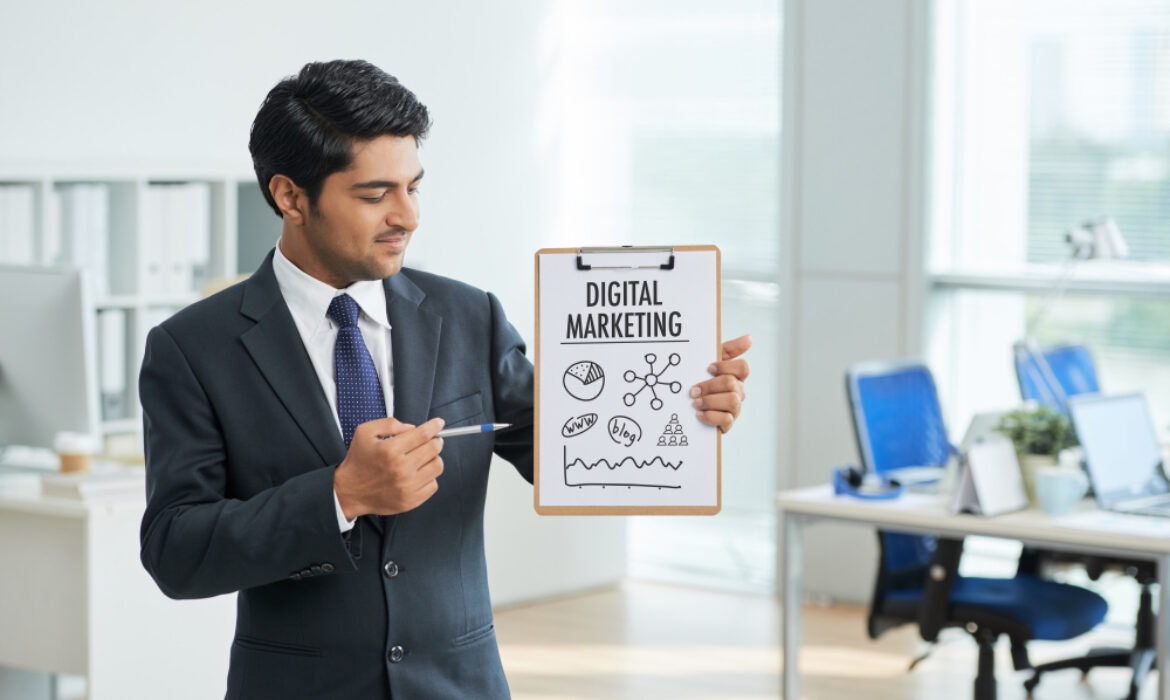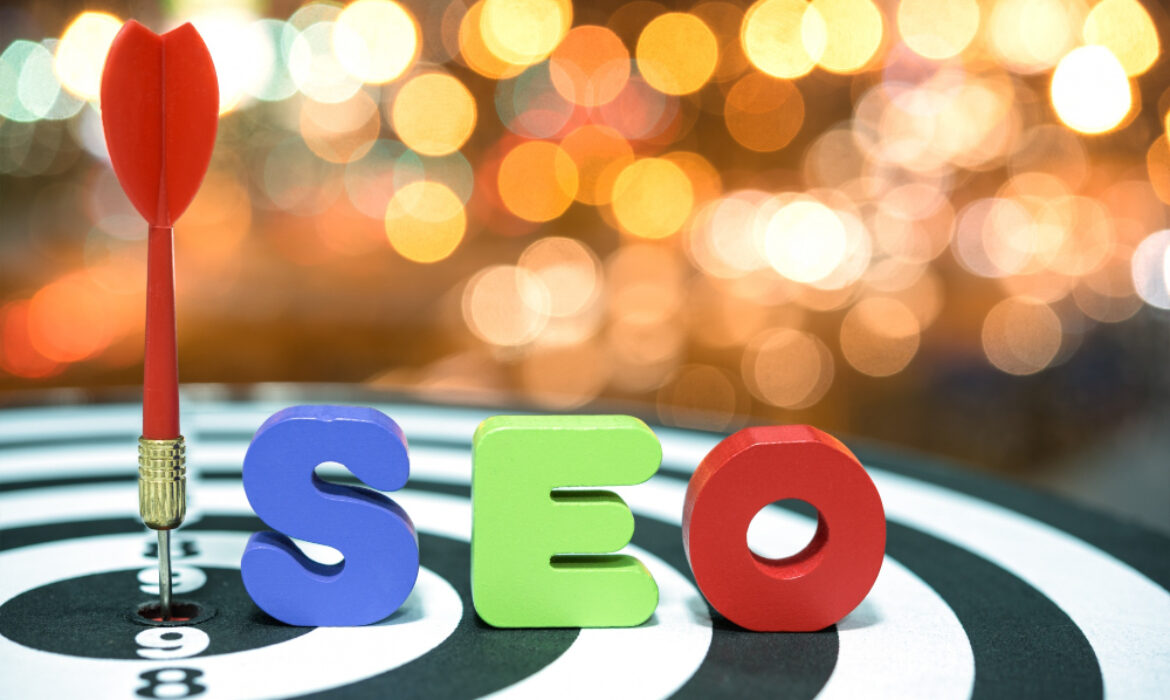Supercharge Your Brand’s Digital Presence using AI
In today’s fast-paced digital landscape, standing out amidst the noise can feel like an uphill battle. But fear not, brands! Artificial intelligence (AI) is no longer a futuristic dream; it’s a tangible tool you can leverage to amplify your digital presence and connect with your audience in impactful ways.
Let’s explore how AI can be your secret weapon:
- Content Creation on Autopilot:
Stop scrambling for content ideas. AI tools can analyze trends, understand your brand voice, and generate engaging content across various formats, from blog posts to social media captions. Save time and resources while staying consistently active.
- Hyper-Targeted Advertising:
Gone are the days of mass blasting. AI personalizes ad experiences by analyzing user data and predicting preferences. Reach the right audience with the right message at the right time, maximizing your advertising ROI.
- Chatbots that Convert:
Don’t let potential customers slip away with unanswered questions. AI-powered chatbots can provide instant support, answer inquiries, and guide users through the sales funnel 24/7, boosting conversions and customer satisfaction.
- Personalized Recommendations:
Treat your audience like individuals. AI algorithms can analyze user behavior and recommend products, services, and content tailored to their unique interests. Enhance engagement and drive higher purchase rates.
- Data-Driven Insights:
AI sifts through massive datasets to reveal hidden patterns and trends. Gain valuable insights into your audience’s behavior, content preferences, and campaign effectiveness. Optimize your strategies for better results.
Remember, AI is a tool, not a magic wand. To truly benefit, consider these key points:
Define your goals: What do you want to achieve with AI? Increased brand awareness, website traffic, or lead generation? Having a clear objective helps choose the right AI tools and track progress.
Start small and experiment: Don’t jump into an AI overhaul overnight. Test different tools and functionalities to see what works best for your brand and audience.
Focus on the human touch: AI empowers you but doesn’t replace human creativity and understanding. Use AI to enhance your existing strategies, not replace them.
Embracing AI opens doors to exciting new possibilities. Use it strategically to create a dynamic, personalized, and data-driven digital presence that truly resonates with your audience.
How to Boost Your Email Marketing Effectiveness
Email marketing remains a marketing powerhouse, boasting phenomenal ROI potential. But in today’s crowded digital landscape, simply sending emails isn’t enough. You need a strategic approach to maximize returns and truly connect with your audience. Here’s how:
Segment & Personalize:
Treat your audience as individuals, not a homogenous mass. Segment your email list based on demographics, interests, purchase history, or engagement levels. This allows you to tailor content and offers, making them more relevant and impactful. Personalize greetings, product recommendations, and even subject lines for higher open rates and conversions.
Craft Compelling Content for Email Marketing:
Remember, your emails are competing for attention. Ditch the generic sales pitches and focus on valuable content that informs, entertains, or inspires. Share industry insights, offer exclusive tips, or showcase customer stories. Use strong visuals, concise writing, and a clear call to action (CTA) to drive engagement.
Embrace Automation:
Streamline your workflows with automated email sequences. Welcome new subscribers with onboarding series, nurture leads with educational content, and re-engage inactive users with win-back campaigns. Automation saves time, personalizes the customer journey, and keeps your brand top-of-mind.
Test & Optimize:
Don’t guess what works – test and measure! A/B test different subject lines, layouts, CTAs, and sending times to see what resonates with your audience. Track key metrics like open rates, click-through rates, and conversions to make data-driven decisions and continuously improve your campaigns.
Integrate with Other Channels:
Email marketing doesn’t exist in a vacuum. Leverage social media, SMS, and other channels to promote your email campaigns and encourage sign-ups. Offer exclusive email content or early access to promotions to incentivize subscribers. Integrate data across channels for a unified customer experience.
Nurture Loyalty & Advocacy:
Building strong relationships is key to long-term ROI. Reward loyalty with exclusive offers, early access to new products, or birthday surprises. Encourage customer reviews and testimonials to build trust and social proof. Make your subscribers feel valued and they’ll become vocal advocates for your brand.
Invest in the Right Tools for Email Marketing:
The right email marketing platform can empower your efforts. Look for features like segmentation, automation, analytics, and A/B testing capabilities. Choose a platform that integrates seamlessly with your existing CRM or marketing tools for a streamlined workflow.
Stay Compliant & Ethical:
Always follow email marketing regulations like CAN-SPAM and GDPR. Obtain explicit consent before sending emails, respect unsubscribe requests promptly, and offer clear opt-out options. Building trust and respect is essential for sustainable success.
Conclusion:
By implementing these strategies, you can transform your email marketing from a cost center to a revenue-generating machine. Remember, it’s a continuous process of optimization and adaptation. Experiment, track results, and refine your approach to unlock the full potential of email marketing and achieve sustainable ROI.
Decoding Success: Key Metrics for Measuring Digital Marketing Triumph
Introduction:
In the fast-evolving landscape of digital marketing, understanding and measuring success is paramount for businesses. This article explores essential metrics that serve as benchmarks for evaluating the effectiveness of digital marketing strategies, ensuring a data-driven approach to maximize returns on investment.
Website Traffic and User Engagement:
Monitor website traffic to gauge the effectiveness of your digital marketing efforts.
Analyze user engagement metrics like time on site, bounce rate and page views to understand audience behavior.
Conversion Rates:
Track conversion rates to assess how well your digital campaigns turn leads into customers.
Evaluate conversions across various channels to identify high-performing platforms and optimize accordingly.
Return on Investment (ROI):
Calculate the ROI of each digital marketing channel to determine where your budget is most effectively spent.
Consider both short-term and long-term gains to ensure a comprehensive understanding of campaign success.
Social Media Metrics:
Assess engagement on social media platforms, including likes, shares, comments and follower growth.
Use social media analytics to understand which content resonates most with your audience.
Email Marketing Performance:
Measure open rates, click-through rates, and conversion rates from email campaigns.
Use A/B testing to optimize email content and design for better performance.
Search Engine Rankings:
Monitor your business’s position in search engine results pages (SERPs).
Track the performance of SEO efforts to enhance visibility and organic traffic.
Customer Acquisition Cost (CAC):
Determine the cost of acquiring a new customer through your digital marketing channels.
Compare CAC with the lifetime value (LTV) of a customer to ensure sustainable profitability.
Customer Feedback and Reviews:
Pay attention to customer reviews and feedback on various platforms.
Address negative reviews promptly and use positive feedback to strengthen your brand image.
Mobile Responsiveness and Accessibility:
Evaluate the mobile-friendliness of your website and digital content.
Ensure a seamless experience for users accessing your brand through mobile devices.
Competitor Analysis:
Benchmark your digital marketing performance against industry competitors.
Identify areas of strength and weakness to refine your strategy and stay ahead in the digital landscape.
Conclusion:
Measuring success in digital marketing requires a comprehensive analysis of various metrics, each providing unique insights into the performance of your campaigns. By regularly assessing these key indicators, businesses can adapt their strategies, optimize their digital presence, and ultimately achieve sustained success in the dynamic world of online marketing.
Marketing Automation: How AI Transforms Strategies for Unparalleled Success
Introduction:
In the ever-evolving landscape of digital marketing, staying ahead of the curve is essential for success. Enter Artificial Intelligence (AI), a game-changer in the realm of marketing automation. This article explores how AI is reshaping digital marketing strategies, enhancing efficiency, and delivering more personalized and impactful campaigns.
The Rise of AI in Marketing Automation:
Data-driven Insights:
AI excels at processing vast amounts of data, providing marketers with valuable insights into customer behaviors, preferences, and trends. This data-driven approach allows for more informed decision-making and targeted marketing strategies.
Personalized Customer Experiences:
Marketing automation powered by AI enables the creation of highly personalized customer experiences. By analyzing individual preferences and past interactions, AI can tailor content, recommendations, and offers, enhancing engagement and satisfaction.
Predictive Analytics:
AI algorithms can predict future trends and customer behaviors based on historical data. This empowers marketers to proactively adjust their strategies, ensuring they are always one step ahead in meeting the evolving needs of their audience.
Efficient Lead Scoring and Nurturing:
AI-driven marketing automation tools can streamline lead scoring processes, identifying and prioritizing leads with the highest conversion potential. Automated nurturing campaigns ensure that leads progress through the sales funnel seamlessly.
Dynamic Content Optimization:
AI can optimize content dynamically, tailoring it in real-time based on user interactions and preferences. This ensures that the right message reaches the right audience at the most opportune moments, maximizing engagement and conversion rates.
Chatbots and Virtual Assistants:
AI-powered chatbots and virtual assistants enhance customer interactions by providing instant responses to queries, guiding users through the sales funnel, and offering a personalized touch. This not only improves customer satisfaction but also frees up human resources for more complex tasks.
Benefits of AI in Marketing Automation:
Time and Cost Efficiency:
Automation powered by AI reduces manual intervention, saving time and resources. This efficiency allows marketers to focus on strategy development, creativity, and building meaningful connections with their audience.
Scalability:
AI-driven marketing automation scales seamlessly to handle large datasets and growing customer bases. This scalability ensures that marketing efforts remain effective and targeted, even as the business expands.
Improved ROI:
By delivering more personalized and relevant content, AI-driven marketing automation increases the likelihood of conversions. This, in turn, contributes to a higher return on investment (ROI) for marketing campaigns.
Adaptability to Market Changes:
AI’s ability to analyze and adapt to changing market conditions enables marketers to adjust their strategies promptly. This adaptability is crucial in the dynamic landscape of digital marketing.
Conclusion:
As the digital marketing landscape continues to evolve, AI-driven marketing automation stands out as a transformative force. By leveraging the power of AI for data analysis, personalization, and efficiency, marketers can unlock new levels of success and build lasting connections with their audience. Embracing AI in marketing automation isn’t just a trend; it’s a strategic imperative for those aiming to thrive in the digital era.
A Comprehensive Digital Marketing Strategy for Ecommerce Triumph
Introduction:
In the dynamic realm of ecommerce, a robust digital marketing strategy is the key to unlocking unprecedented success. With the ever-evolving digital landscape, staying ahead requires a strategic approach that leverages the power of various channels. In this blog post, we’ll explore a comprehensive digital marketing strategy tailor-made for ecommerce businesses, ensuring a seamless journey from brand awareness to customer loyalty.
Understand Your Audience:
Start by building detailed buyer personas. Understand your target audience’s demographics, preferences and online behavior. This foundation will shape your entire marketing strategy.
Optimized Website:
Your ecommerce website is your digital storefront. Ensure it is user-friendly, mobile-responsive and optimized for search engines (SEO). A smooth and visually appealing website enhances user experience, positively impacting conversions.
Search Engine Optimization (SEO):
Invest in a robust SEO strategy to improve your website’s visibility in search engine results. Optimize product pages, use relevant keywords and regularly update content. High search rankings translate to increased organic traffic.
Social Media Marketing:
Leverage popular social media platforms to connect with your audience. Create engaging content, run targeted ads and utilize features like shoppable posts. Social media is a powerful tool for brand building and driving traffic to your ecommerce site.
Email Marketing:
Develop a strategic email marketing campaign to nurture leads and encourage repeat business. Send personalized, relevant content, and automate emails for abandoned cart reminders, product recommendations and special promotions.
Content Marketing:
Create valuable, shareable content to establish your brand as an authority in your industry. Blog posts, product guides and videos can not only attract potential customers but also improve your SEO.
Paid Advertising:
Utilize paid advertising on platforms like Google Ads and social media channels. Implement targeted campaigns based on demographics, interests, and behavior. This approach ensures efficient spending and maximizes ROI.
Influencer Marketing:
Collaborate with influencers in your niche to reach a broader audience. Influencers can provide authentic endorsements, fostering trust and credibility among their followers.
Customer Reviews and Testimonials:
Encourage and showcase customer reviews and testimonials. Positive feedback builds trust, and potential customers are more likely to make a purchase if they see others have had a positive experience.
Analytics and Data Analysis:
Regularly analyze data from various channels. Use tools like Google Analytics to understand user behavior, track conversions, and fine-tune your strategy based on performance metrics.
Conclusion:
A successful ecommerce digital marketing strategy is a dynamic fusion of various tactics, each playing a unique role in the customer journey. By understanding your audience, optimizing your online presence, and strategically leveraging multiple channels, your ecommerce business can thrive in the competitive digital landscape. Stay agile, adapt to evolving trends and watch as your comprehensive digital marketing strategy propels your ecommerce venture to new heights.
A Digital Marketing Blueprint for Maximizing ROAS
Introduction:
Return on Ad Spend (ROAS) is a key metric that gauges the effectiveness of your marketing efforts. In the digital age, leveraging strategic digital marketing techniques is paramount for optimizing ROAS. Let’s explore a comprehensive blueprint to harness the power of digital marketing and propel your company’s ROAS to new heights.
Define Clear Goals:
Begin by setting specific and measurable goals. Whether it’s increasing sales, boosting website traffic, or expanding brand awareness, a well-defined goal provides direction for your digital marketing strategy.
Understand Your Audience:
Tailor your digital marketing efforts to resonate with your target audience. Utilize customer data, conduct market research, and create buyer personas to ensure your messaging aligns with the needs and preferences of your ideal customers
Optimize Your Website:
A user-friendly and well-optimized website is the foundation of successful digital marketing. Ensure fast loading times, mobile responsiveness, and an intuitive user interface to enhance the overall user experience, encouraging conversions
Implement SEO Strategies:
Enhance your online visibility through search engine optimization (SEO) techniques. Optimize website content, use relevant keywords, and build high-quality backlinks to improve your website’s search engine rankings and attract organic traffic.
Leverage Social Media Channels:
Engage with your audience on popular social media platforms. Create compelling content, run targeted ads, and foster community engagement to increase brand awareness and drive traffic to your website.
Email Marketing Excellence:
Develop a robust email marketing strategy to nurture leads and retain customers. Personalized and relevant email campaigns can significantly contribute to repeat business and customer loyalty.
Invest in Paid Advertising:
Utilize paid advertising channels such as Google Ads and social media ads to reach a wider audience. Implement effective targeting, compelling ad copy, and impactful visuals to maximize the return on your advertising spend.
Utilize Data Analytics:
Leverage data analytics tools to track and analyze the performance of your digital marketing campaigns. Identify what works and what doesn’t, allowing you to make data-driven adjustments for continuous improvement.
Implement Retargeting Strategies:
Capitalize on retargeting to re-engage with visitors who didn’t convert initially. Tailor ads based on their previous interactions, reminding them of your products or services and encouraging them to complete a desired action.
Optimize Landing Pages:
Streamline the conversion process by optimizing landing pages. Ensure that they align with your ad messaging, feature clear calls-to-action, and provide a seamless experience for visitors to convert.
Conclusion:
Embracing a holistic digital marketing approach is instrumental in enhancing your company’s ROAS. By defining goals, understanding your audience, and strategically deploying various digital marketing channels, you can create a powerful synergy that not only increases conversions but also strengthens your brand’s online presence. Stay agile, adapt to market trends and consistently refine your digital marketing strategies to achieve sustainable and growing returns on ad spend.
A Comprehensive SEO Strategy for Boosting Traffic and Conversions
Introduction:
In the competitive digital landscape, a robust SEO strategy is the key to unlocking higher website traffic and conversions. Search Engine Optimization (SEO) is not just about ranking high on search engine results; it’s about creating a seamless user experience and meeting the needs of your target audience. In this article, we’ll delve into a comprehensive SEO strategy that goes beyond keywords, focusing on aspects that drive both traffic and conversions.
Keyword Research: The Foundation of SEO
Start by understanding your audience and the keywords they use. Utilize tools like Google Keyword Planner to identify high-ranking keywords relevant to your niche. Incorporate long-tail keywords to capture more specific search queries and attract targeted traffic.
Content Quality and Relevance: Engaging Your Audience
Develop high-quality, relevant content that addresses the needs and interests of your audience. Regularly update your content to stay current and provide value. Engaging, informative and shareable content not only attracts visitors but also encourages them to stay and explore.
On-Page SEO Optimization: Enhancing Visibility
Optimize each page for search engines by incorporating relevant keywords in titles, meta descriptions, headers and throughout the content. Ensure that your website is easily navigable, with a clear URL structure and descriptive alt text for images.
Mobile Optimization: Catering to Mobile Users
With the increasing use of mobile devices, optimizing your website for mobile is non-negotiable. Google prioritizes mobile-friendly websites in search rankings, making mobile optimization crucial for both SEO and user experience.
Page Speed: The Need for Speed
Users expect fast-loading websites. Google considers page speed as a ranking factor, so optimize images, leverage browser caching and use Content Delivery Networks (CDNs) to enhance your site’s loading speed.
User Experience (UX): From Click to Conversion
A seamless user experience is vital for both SEO and conversion. Ensure intuitive navigation, clear calls-to-action and a visually appealing design. A positive user experience encourages visitors to explore your site and increases the likelihood of conversions.
Backlink Building: Authority and Trust
Earn high-quality backlinks from reputable websites within your industry. Backlinks are a strong signal to search engines that your content is trustworthy and valuable. Foster relationships with influencers and industry leaders to amplify your link-building efforts.
Local SEO: Connecting with Nearby Audiences
For businesses targeting local audiences, optimize your website for local searches. Claim your Google My Business listing, encourage customer reviews, and ensure accurate business information across online directories.
Analytics and Data Analysis: Informed Decision-Making
Implement tools like Google Analytics to track website performance. Analyze user behavior, identify high-performing pages and understand conversion funnels. Use these insights to refine your SEO strategy and enhance areas that drive results.
Conversion Rate Optimization (CRO): Turning Visitors into Customers
Continuously optimize for conversions. A/B test landing pages, improve CTAs and streamline the checkout process. Understanding user behavior through analytics helps refine your website’s conversion path.
Conclusion:
Achieving success in the digital realm requires a holistic SEO strategy that aligns with user intent and search engine algorithms. By focusing on comprehensive keyword research, content quality, technical optimization, and user experience, you’ll not only drive more traffic to your website but also convert visitors into loyal customers. Embrace the evolving landscape of SEO, staying attuned to industry trends, and adapt your strategy accordingly for sustained growth and success.
Crafting A Killer Digital Marketing Strategy For Business Success
Introduction:
In the fast-paced digital landscape, a robust digital marketing strategy is the key to unlocking business success. From increasing brand awareness to driving sales, an effective digital marketing plan can elevate your business to new heights. In this blog post, we’ll explore the essential elements of crafting a killer digital marketing strategy that can propel your business forward in the digital era.
1. Define Your Goals:
Begin by clearly defining your business objectives. Whether it’s increasing website traffic, boosting online sales or enhancing brand awareness, establishing specific, measurable, and achievable goals is the foundation of any successful digital marketing strategy.
2. Know Your Target Audience:
Understanding your target audience is paramount. Conduct market research to identify your audience’s preferences, behaviors and pain points. This knowledge will guide your marketing efforts and help you create content that resonates with your audience.
3. Build a Strong Online Presence:
Invest in a well-designed website that is user-friendly and optimized for search engines. Utilize social media platforms to engage with your audience, share valuable content, and build a community around your brand. Consistent and authentic online presence is crucial for building trust and credibility.
4. Content is King:
Create high-quality, relevant, and valuable content that aligns with your brand and speaks to your audience’s needs. From blog posts and videos to infographics and podcasts, diversify your content to cater to different preferences within your target audience.
5. Embrace SEO Strategies:
Optimize your website and content for search engines to increase visibility and organic traffic. Conduct keyword research, focus on on-page and off-page SEO, and stay updated on algorithm changes to ensure your content ranks well in search engine results.
6. Leverage Email Marketing:
Build and nurture your email list to establish direct communication with your audience. Craft compelling email campaigns that provide value, showcase your products or services, and encourage customer engagement. Personalize your emails to create a more personalized and meaningful connection.
7. Embrace Social Media Advertising:
Utilize paid social media advertising to reach a wider audience and drive targeted traffic. Platforms like Facebook, Instagram and LinkedIn offer robust advertising tools to help you tailor your messages to specific demographics.
8. Monitor Analytics:
Regularly analyze and interpret data from various analytics tools. Track key performance indicators (KPIs) such as website traffic, conversion rates, and social media engagement. Use these insights to refine and optimize your digital marketing strategy for better results.
9. Emphasize Mobile Optimization:
With the increasing use of mobile devices, ensure that your website and content are optimized for mobile users. A seamless mobile experience contributes to improved user satisfaction and better search engine rankings.
10. Stay Agile and Adapt:
Digital marketing is ever-evolving. Stay informed about industry trends, consumer behavior and emerging technologies. Be ready to adapt your strategy to capitalize on new opportunities and stay ahead of the competition.
Conclusion:
Crafting a killer digital marketing strategy requires a combination of careful planning, continuous learning, and adaptability. By understanding your goals, knowing your audience and leveraging the right tools and tactics, you can create a powerful digital presence that propels your business to success in the dynamic world of online marketing.
How Social Media Marketing Boosts E-Commerce Success
Introduction:
In the digital age, leveraging the potential of social media is a game-changer for e-commerce businesses. Social media marketing goes beyond traditional advertising, providing a dynamic platform to engage with a global audience, build brand awareness and drive sales. Let’s delve into the mechanisms that make social media marketing a formidable ally for e-commerce success.
Targeted Reach:
Social media platforms allow businesses to define and target specific demographics, ensuring that marketing efforts reach the right audience. This precision targeting enhances the effectiveness of promotional campaigns and increases the likelihood of converting leads into customers.
Building Brand Identity:
Establishing a strong brand identity is crucial for e-commerce success. Social media provides a space for businesses to showcase their personality, values and products, fostering a connection with potential customers. Consistent branding across platforms creates a memorable and trustworthy image.
Engagement and Interaction:
Social media facilitates direct communication between businesses and customers. Interactive content, such as polls, Q&A sessions and live videos, creates a sense of community and engagement. Responding to customer queries and feedback in real-time builds trust and loyalty.
Showcasing Products Creatively:
Visual content is king in the e-commerce realm. Social media platforms enable businesses to showcase their products through visually appealing posts, stories and videos. Creative and engaging content captures the attention of potential customers, driving interest and sales.
Influencer Collaborations:
Partnering with influencers in the industry can significantly amplify an e-commerce brand’s reach. Influencers bring authenticity and credibility, introducing products to their followers in a more personal and relatable manner. This form of social proof can drive conversions and boost sales.
Data Analytics for Optimization:
Social media platforms provide robust analytics tools that offer insights into the performance of marketing campaigns. By analyzing data, e-commerce businesses can refine their strategies, optimize content and maximize the impact of their social media marketing efforts.
Promotions and Exclusive Offers:
Social media is an ideal platform for running promotions, contests and sharing exclusive offers. Creating a sense of urgency or exclusivity encourages followers to make purchases, driving both short-term sales and long-term brand loyalty.
Conclusion:
In the competitive landscape of e-commerce, mastering social media marketing is not just an option – it’s a necessity. The ability to connect, engage and influence potential customers on a global scale makes social media an invaluable tool for e-commerce businesses. By harnessing the diverse features and strategies that social media platforms offer, businesses can elevate their online presence, drive sales and build a loyal customer base.
How Digital Marketing Powers EdTech Evolution
Introduction
In the fast-paced realm of education technology (EdTech), the transformative impact of digital marketing is undeniable. This article explores the dynamic strategies employed in the EdTech sector, shedding light on how digital marketing plays a pivotal role in reaching learners, driving engagement and propelling the evolution of education in the digital age.
Digital Marketing Strategies in EdTech
Targeted Online Advertising: EdTech companies leverage targeted online advertising to reach specific demographics, promoting their platforms through channels like Google Ads and social media. Ad campaigns can be customized to align with the interests and needs of potential learners.
Content Marketing: EdTech relies heavily on content marketing to showcase the value of their platforms. Blogs, webinars and informative videos highlight the benefits of online learning, address common concerns, and position the EdTech brand as an authority in the educational space.
Influencer Partnerships: Collaborating with influencers in the education sector can amplify the reach of EdTech platforms. Influencers share their experiences with the platform, providing authentic testimonials that resonate with their audience and build trust.
Search Engine Optimization (SEO): Ensuring that EdTech platforms appear prominently in search engine results is crucial. Effective SEO strategies involve optimizing website content, utilizing relevant keywords and creating a user-friendly online experience.
Email Marketing: EdTech companies use email marketing to nurture leads, keep learners informed about new courses or features and encourage user engagement. Personalized email campaigns tailored to specific user segments contribute to a positive learner experience.
Benefits of Digital Marketing in EdTech
Global Accessibility: Digital marketing enables EdTech platforms to transcend geographical barriers, reaching learners worldwide. This global accessibility allows EdTech companies to tap into diverse markets and cater to the needs of learners from different backgrounds.
Data-Driven Decision Making: Analytics tools provide valuable insights into user behavior, helping EdTech companies make data-driven decisions. This information can be used to refine marketing strategies, enhance user experience, and optimize the platform for better engagement.
Community Building: Social media platforms serve as powerful tools for EdTech companies to build a community around their brand. Online forums, live sessions and interactive content foster a sense of belonging among learners, encouraging collaboration and knowledge-sharing.
Agile Adaptation: The digital landscape evolves rapidly, and EdTech companies must stay agile to remain competitive. Digital marketing allows for quick adaptation to emerging trends, ensuring that EdTech platforms remain relevant and appealing to their target audience.
Impact on Learning Acquisition and Retention
Digital marketing in EdTech goes beyond acquiring new users; it plays a crucial role in learner retention. Engaging content, personalized communication and ongoing marketing efforts contribute to a positive user experience, encouraging learners to stay connected with the platform and explore additional offerings.
Conclusion
In the EdTech landscape, the synergy between digital marketing and educational technology is reshaping the way we approach learning. By employing targeted strategies, embracing innovation and fostering a sense of community, EdTech companies can leverage the power of digital marketing to not only attract new learners but also create an enriching and sustainable educational ecosystem in the digital age.














